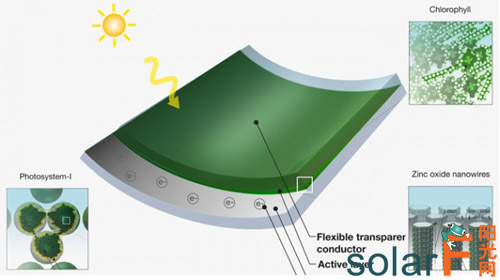On Thursday, according to scientists, a special bag of powder will be sold in the next few years. This product can make trimmed grass chips into solar power batteries. Andreas Mershin, a researcher at the Massachusetts Institute of Technology, told reporters: "This is our dream." The powder contained in the bag is a cheap chemical mixture that stabilizes the photosynthetic molecules in green plants, which is what we call photosynthesis. System I, so they can be used to generate electricity. The instructions on how to further manufacture the so-called bio-photovoltaic power generation will be printed in a cartoon in the packaging bag. One step is to extract and concentrate the photosynthetic system I from the yard waste, such as a cheese cloth film or a spinach film. Mershin promised: "It's not difficult. The green material is well-processed." In addition, these DIY programs also need to roughen a piece of glass or metal to increase the surface area of ​​the green sticky paste to the plate. The wires connected to the roughened plates will pass the green sticky current to the battery, cell phone or a lamp. Mershin and his colleagues explained the process of setting up bio-photovoltaic power generation in the open reading magazine Scientific Reports. This research has been improved on the basis of studies by colleague Shuguang Zhang of Mershin MIT. Previously, Shuguang Zhang painted the photosynthetic system I on the surface of flat glass. The resulting current is small and practically useless. In addition, the chemical stabilizer used is expensive and its assembly requires the use of expensive laboratory equipment. Mershin finds inspiration in nature and finds that designing in pine forests may be better because it absorbs more light. He used zinc oxide nanowires and sponge-like titanium dioxide nanostructures to mimic this forest effect. When coated on the chip with light-harvesting substances extracted from plants, it formed a solar cell with an efficiency of 0.1%. Mershin said: "The efficiency of 0.1% can only be used as a proof of theory. Only when the efficiency reaches 1%-2% and the life expectancy reaches 12 months, people will use it in real life." We hope that researchers from all over the world will experiment repeatedly so that it can be completed using inexpensive materials and equipment, and improve the design to reach a new milestone. If so, the technology could become a way to bring electricity to 1.2 billion people in the world. He said: "The ideal situation is not even a plastic bag containing powder. We will issue a leaflet to publish this information." (Translation: Erin) Modern Soap Dispenser,Soap Dispenser For Vila,Soap Dispenser Pump For Sink,Kitchen Sink Soap Dispenser Kaiping Jenor Sanitary Ware Co., Ltd , https://www.sanitaryjenor.com
Bio-photovoltaic diagram.